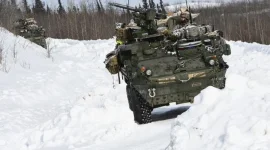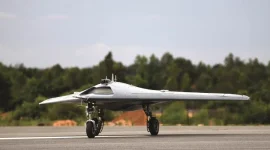- Views: 1K
- Replies: 11
In the wake of a recent Air India Boeing aircraft crash, a national conversation on aviation safety and India’s heavy dependence on foreign manufacturers has gained significant momentum.
Experts and industry observers are renewing calls for India to accelerate its indigenous Regional Transport Aircraft (RTA-90) program as a pathway to greater self-reliance and enhanced aviation security.
The tragic incident has drawn attention away from initial reports focusing on pilot error towards more systemic issues, such as the operational risks associated with aging fleets.
Currently, India's civil aviation sector, one of the fastest-growing in the world, is overwhelmingly dominated by a duopoly of foreign manufacturers, Airbus and Boeing.
Together, they supply over 90% of the aircraft for major carriers like Air India, IndiGo, and SpiceJet, which have placed record-breaking orders for hundreds of new jets.
This dependency, however, exposes the nation to several challenges, including supply chain vulnerabilities, price fluctuations, and mounting concerns over the safety and maintenance of aircraft.
At the heart of this push for self-reliance is the proposed Regional Transport Aircraft (RTA-90). This indigenous project, a collaboration between Hindustan Aeronautics Limited (HAL) and the National Aerospace Laboratories (NAL), is being developed as a 90-seat aircraft powered by twin turbofan engines.
It is specifically designed for short-haul routes ranging from 300 to 1,000 kilometres.
The aircraft is tailor-made to support the government's UDAN (Ude Desh ka Aam Nagrik) scheme, which aims to enhance connectivity to underserved Tier-2 and Tier-3 cities where operating larger foreign jets is often not economically viable.
The development of the RTA-90 offers a multitude of benefits for the nation.
Operationally, it is designed for fuel efficiency, lower maintenance costs, and the ability to operate from shorter runways common in regional airports.
Economically, the program is expected to energize India’s domestic aerospace ecosystem, fostering a supply chain involving private companies like Tata Advanced Systems and Mahindra Aerospace, and creating thousands of skilled jobs.
Strategically, an indigenous aircraft program reduces the country's vulnerability to international sanctions or geopolitical disruptions.
Furthermore, the platform could be adapted for dual-use military roles, strengthening India's national defence capabilities in areas like maritime patrol and surveillance.
To ensure the RTA-90's success, proponents are calling for a decisive policy intervention: temporarily restricting foreign manufacturers from competing in the domestic short-haul market.
This strategy would create a protected market for the RTA-90, guaranteeing initial orders and incentivizing private airlines to invest in the platform.
This approach would mirror policies used by countries like China to support its own COMAC C919 aircraft, which has successfully entered commercial service and now competes with Airbus and Boeing.
Such a policy could prevent the RTA-90 from facing the same fate as earlier projects like the NAL Saras, which stalled due to a lack of funding and firm orders.
The recent air disaster serves as a critical wake-up call regarding the potential risks of over-reliance on external suppliers. By championing the RTA-90, India has an opportunity to address aviation safety concerns head-on while building a resilient, world-class aerospace industry.
The path forward requires bold decisions from the Ministry of Civil Aviation to transform the RTA-90 from a concept on paper into the cornerstone of India’s regional aviation future.


